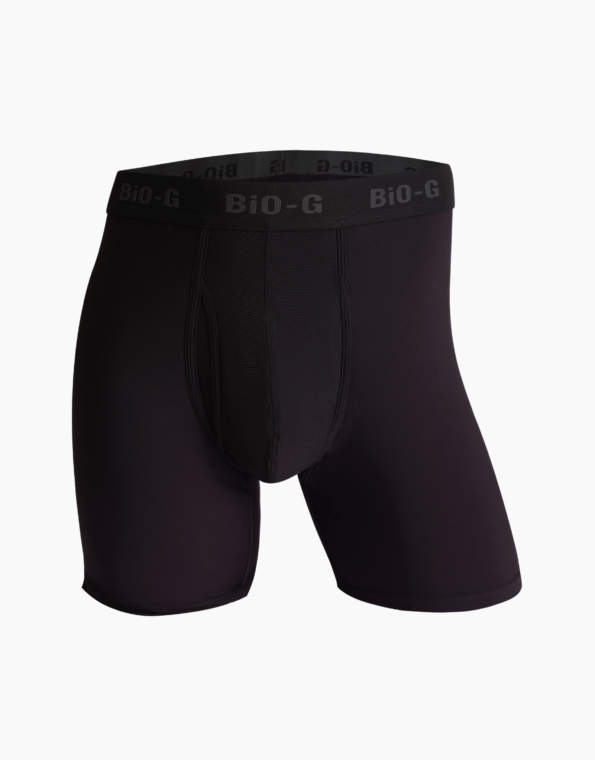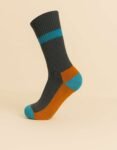A lot of apparel companies in the workwear and outdoor spaces have been pushing for newer technical fabrics designed to keep you dry. As a result, the term “moisture-wicking fabric” has been thrown around by several of our vendors. Simply put, when a product claims to be moisture-wicking, it means the fabric is non-absorbent, allowing sweat (or moisture) to move to the outer layer of the fabric, where it will dissipate more quickly than with standard fabrics. Moisture-wicking does not necessarily mean it will reduce your sweat, but when you do sweat, the moisture will move through the material and dry faster than it would with cotton or other regular fabrics.
For a long time, moisture-wicking was mostly found in athletic gear, but we’re now seeing more workwear products, such as Bio-G Performance Socks and Anti-odor Boxer Briefs, incorporate moisture-wicking materials.
Whether it’s for work or play, wearing socks made from moisture-wicking materials can be a game-changer on hot, sweaty days.
Long Story
Over the past decade, we’ve seen significant advancements in manufacturing, materials, and fabrics. A term that has become more prevalent in product descriptions is “moisture-wicking,” but there are some misconceptions about what that means. Here’s a breakdown of the three most common terms you’ll encounter:
- Moisture-wicking: When socks or boxer briefs are labeled as moisture-wicking, it means the fabric won’t absorb or retain moisture. Typically, this is achieved with synthetic fibers like nylon or polyester. However, some natural fibers, like merino wool and bamboo such as Bio-G Performance Socks, also have moisture-wicking properties, but we’ll focus on the synthetics for now.
- Quick-drying: This term means the moisture is moved to the surface of the fabric, and when exposed to air, it dries faster than standard fabrics like cotton.
- Breathable: A breathable fabric allows air to pass through, preventing the air next to your skin from getting trapped, which can cause you to sweat even more.
Any product that doesn’t absorb moisture can be considered moisture-wicking, but it’s important to make sure the product is also breathable. Just because a fabric is breathable doesn’t automatically mean it’s quick-drying, so it’s crucial to find socks or boxer briefs made with high-quality fibers that are light, soft on the skin, and provide the right balance of moisture management for both comfort and effectiveness.
-
Antiodor Boxer Brief Men’s Underwear
Price range: $32.99 through $59.99 -
Athletic Unisex Ankle socks
Price range: $25.99 through $39.99 -
BIO G Urban Luxe Men’s Dress Socks
Price range: $24.99 through $52.99















